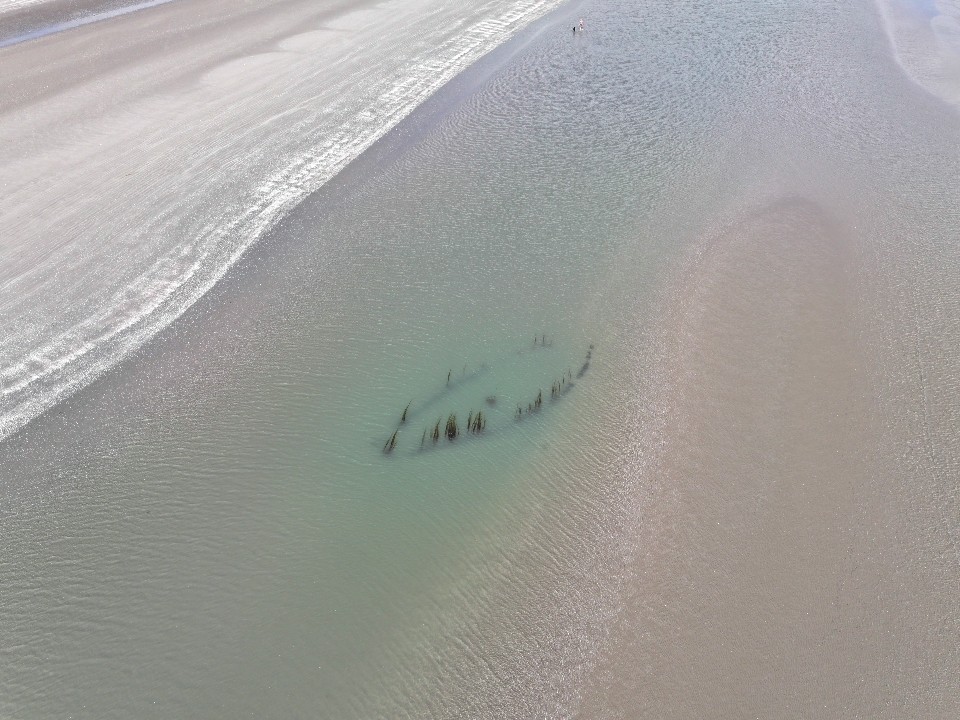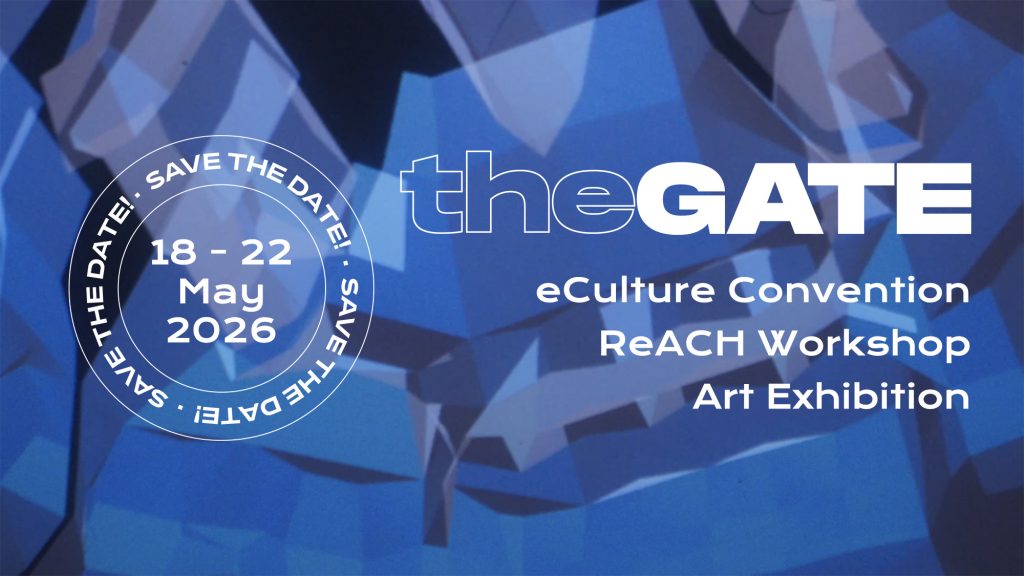SHAPESHIFTER traces Dublin Port’s layered identities through cultural, historical, and anthropological lenses. Water assumes a central role in its metaphorical dimension, but also as a carrier of measurable data. A biological breathing system that connects the more-than-human planetary networks and underground waterways to the city as a living system that is defined by the forces of nature.
Depicting streams, rivers and oceans as planetary networks, it navigates
submerged landscapes, and the shifting boundaries of coastal erosion, ultimately posing questions about our relationship to water, memory, and the future. The image of the sea 20 appears as a metaphor, ever moving and changing its form, relentless and elusive but also timeless and constant.
Siobhan McDonald is a Visual Artist: with a research-based practice encompassing paint, drawing, film and sound
This haunting journey from wetland to shoreline navigates a two-hundred-year slice of underwater time through a fluid and multifaceted lens, spanning scientific, cultural, and historical perspectives. The film Floating Body captures a vivid revelation of a shipwreck to reveal precarious balance at a pivotal moment in rising sea levels. It lies just outside the formal boundaries of Dublin Port, on Pormarnock – a 19th-century fishing vessel buried beneath the sand for over 200 years.
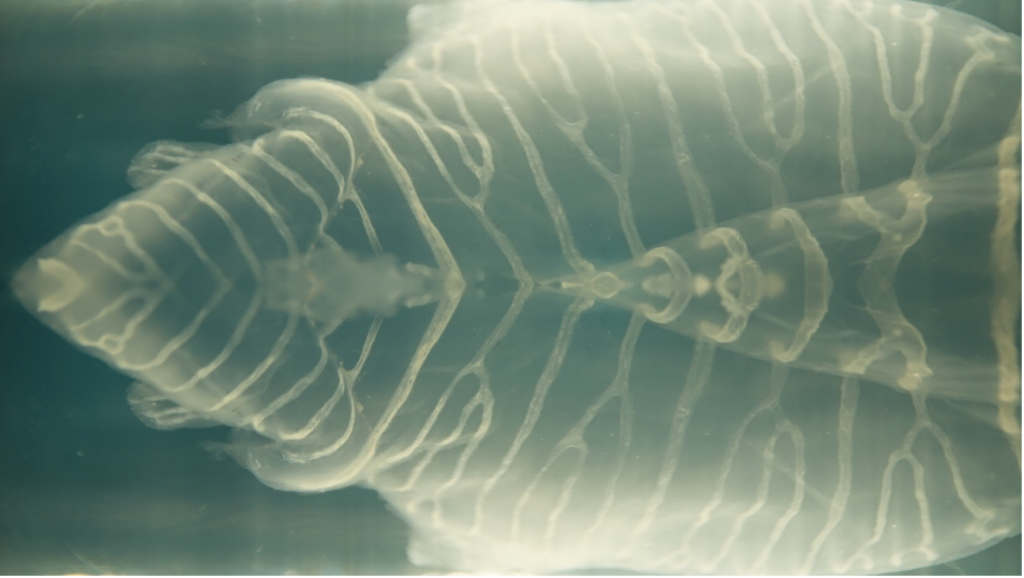
Creative Team:
Composers: Mel Mercier and David Stalling
Filmmaker: Jose Miguel Jimenez
Producer: Bridget Webster
AI research fellow: Ivan Bacher (ADAPT)
Professor Chris Bean: DIAS FIBRE OPTIC CABELLING TECHNOLOGY:
Marine Collaborations at Dublin Port:
Paul Brookes (School of Biology and Environmental Science, UCD)
Underwater Archaeology:
Karl Brady (National Monuments Service, The Custom House)
Niall Brady (ADCO Ltd., Co. Wicklow, Ireland)
NFOMAR Project:
Collaboration between the Geological Survey Ireland and the Marine Institute, mapping Ireland’s unmapped marine territory and seabed features at Dublin Port.
Coastal Plant Research:
Professor Jenny McElwain (Botany Department, Trinity College Dublin). Exploring coastal plants to address sea level rise at Dublin Port.
Coastal Geomorphology & Sea Level Rise:
Professor Iris Moeller (Head of Geography, Trinity College Dublin). Researching physical and biological processes in intertidal zones at Dublin Port.
Dr. Robin Edwards (Trinity College Dublin): Sea level rise mapping and adapting new high-tech GPS modelling
Additional funding from DCU/ADAPT, Culture Ireland and the Joyce Centre in Trieste
Image credits: Jose Miguel Jimenez
Residency Support Network:
About Siobhán McDonald
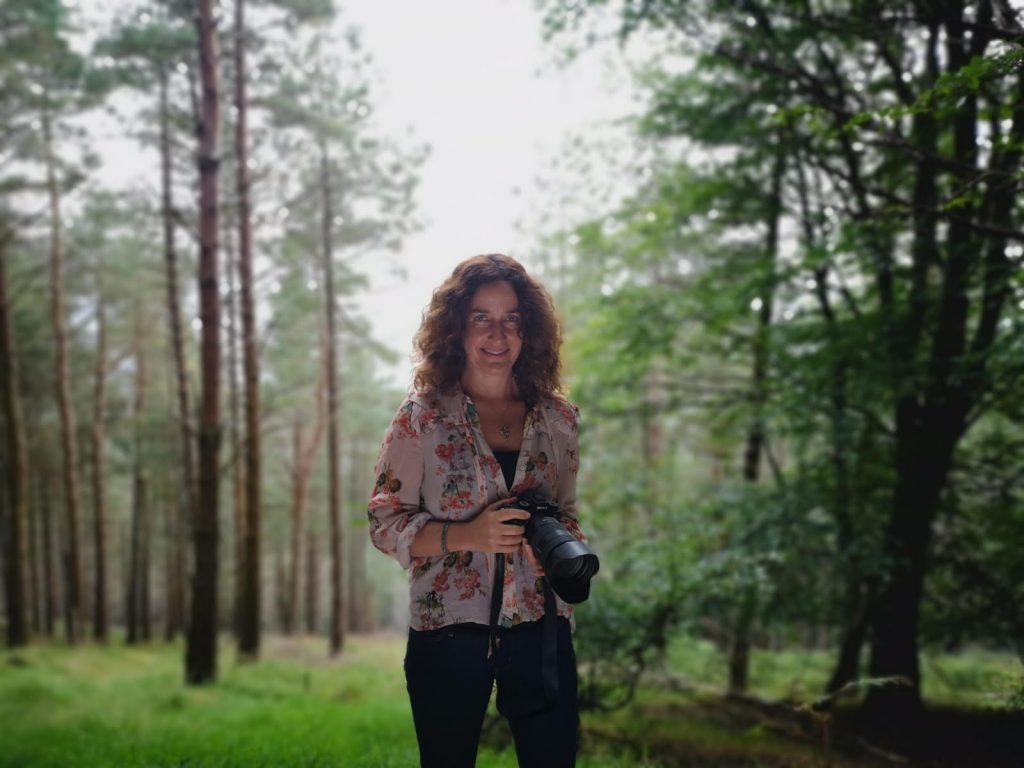
Siobhán McDonald (female, Irish) is a Dublin-based Irish artist whose work delicately intertwines scientific inquiry with artistic expression, focusing on air, breath, and atmospheric phenomena. Her practice, grounded in fieldwork and collaboration, explores the natural world by engaging directly with materials withdrawn from their cycles of life, decay, and regeneration. Through this, McDonald creates art that contemplates humanity’s place on Earth within the vast expanse of geological time.
Siobhan McDonald is the recipient of the European Commission’s S+T+ARTS 4Water (2024) and the inaugural recipient of the OCEAN MEMORY AWARD (2022.) In 2023 – other recent notable international awards include the EU Commission Alumni (IT) & Climate Whirl, Helsinki awards and Project Award (IRL) Presentation highlights in 2022-24 include Solo shows, The Model, Sligo; Living Canvas Public Art Project, Dublin & in major group exhibitions at the Royal Hibernian Academy (RHA) Gallery, Dublin, Ars Electronica, BOZAR, Brussels, The Weisman Museum, USA, Centre for Contemporary Art LAZNIA & CCI, Paris.
Host / Region
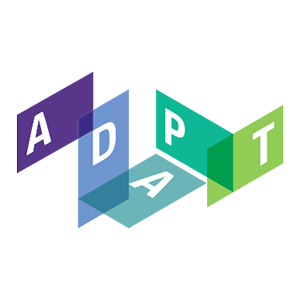

BETA Festival & ADAPT/ Dublin, Ireland – Port of Dublin
Abstract
This residency called artists to explore the inner working of the Dublin port as to enable the public to better understand the networks and infrastructures facilitating our daily lives
Keywords
port city interface, human centred design, systems thinking, future cities, infrastructure
smart cities, artificial intelligence, data design
Description of the regional challenge
Rapid urbanisation and gentrification in Dublin have heightened land demand, particularly around Dublin Port, straining the balance between operations and city development. Land scarcity compounds congestion and limits expansion, worsened by the housing crisis, as well as post-Brexit landscape creating geopolitical shifts impacting trade, regulations, and stability, crucial as Ireland’s main trade hub with Europe. Navigating these changes demands strategic planning to balance port needs with urban development goals, which is vital for sustainable growth and community prosperity.
How do our challenges in allocation of shrinking resources connect – and how can we ensure that technologies become an asset in solving them, not an aspect of aggravation? How can artistic interventions and research-based practices serve as catalysts for stimulating dialogue and debate around the ethical, cultural, and political dimensions of port development and its impact on society?
How is the mission S+T+ARTS driven?
This residency will be supported by researchers and access to technology through ADAPT – the world-leading Science Foundation Ireland Research Centre for AI-Driven Digital Content Technology – who have specific research expertise in AI, Content Analytics, Machine Translation, Personalisation, Multimodal Interaction, Human-Computer Interaction and Data Management. The residency will also be connected and supported by the Irish Maritime Development office.
Beta Festival critically engages with technologies’ impact on society through creativity, experimentation and debate. We invite proposals that make visible the invisible mechanics and infrastructures of ports and waterways highlighting the importance of port-city interfacing. Interdisciplinarity, consideration of the geopolitical landscape and research-based practice is integral to the project.
About The Project – Shapeshifter
Shapeshifter is an ever-evolving organic project that revives buried traditions and presents new perspectives on Dublin Port. It will map and make visible a slice of underwater time from 1850 to 2050 using cutting-edge technology to address the challenges of urbanisation. It will provoke a departure from conventional structures to pose new questions and underscore the invisible and intangible power of ports through rigorous experimentation and creative collaboration, engaging diverse stakeholders.
Jury Statement
“Creatively and technically ambitious project, the interesting proposed use of data gathering and analysis technologies to ground this project in the past, present and future of Dublin Port. Has the potential to have a lasting impact.“
